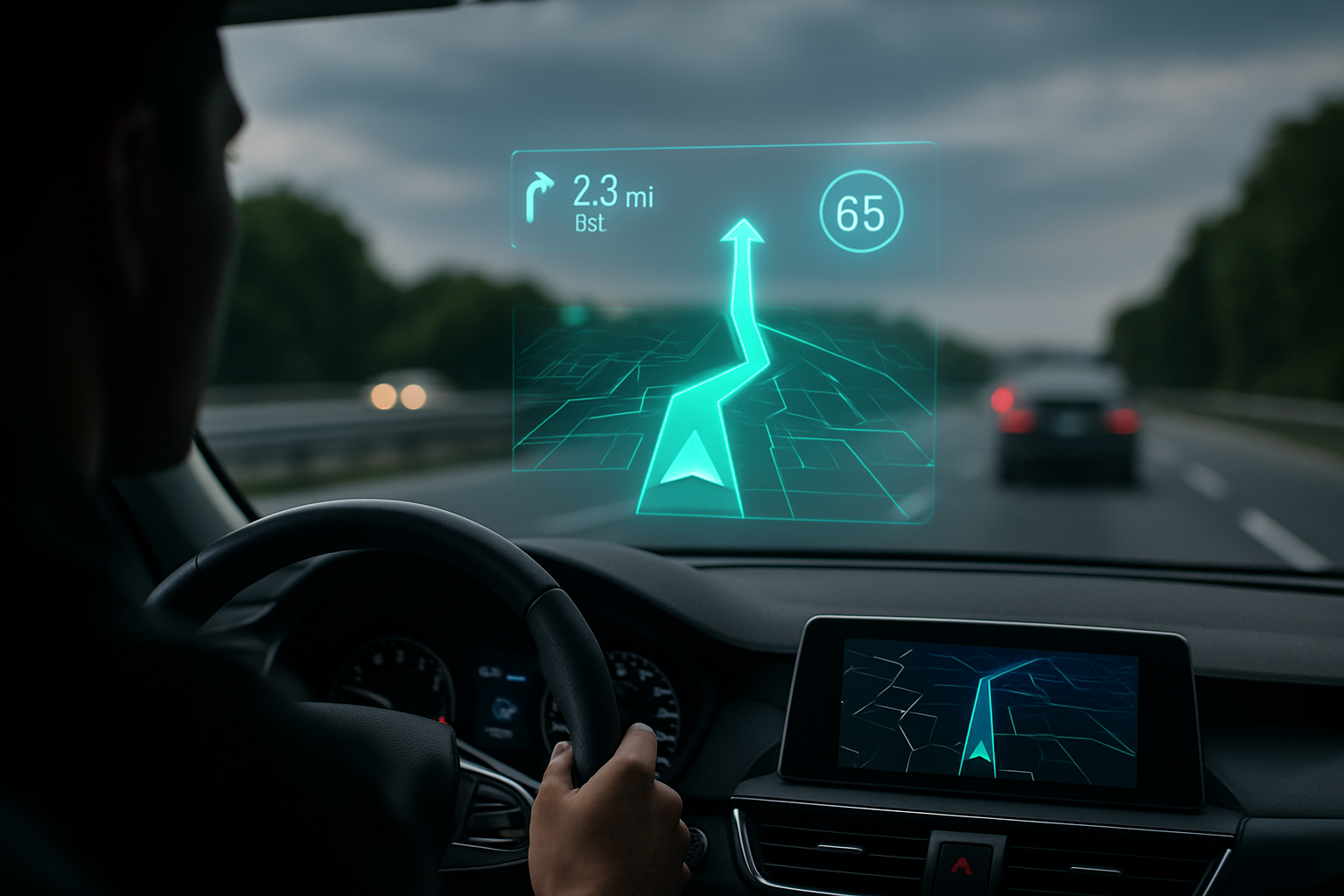Holographic Windshields: The Future of Driver Information Display
A futuristic scenario unfolds as you slip behind the wheel of your car. The windshield comes alive with vibrant, three-dimensional displays floating in your field of view. Navigation arrows hover above the road, speed limits appear on street signs, and critical vehicle information materializes before your eyes. This isn't science fiction – it's the cutting-edge world of holographic windshields, poised to revolutionize how drivers interact with their vehicles and the road ahead.

The leap from traditional HUDs to holographic windshields began in earnest in the early 2010s. Automotive engineers and tech companies recognized the potential of augmented reality (AR) to enhance the driving experience. By leveraging advancements in holographic projection, materials science, and computer vision, researchers set out to transform the entire windshield into an interactive, information-rich display.
How Holographic Windshields Work
At the heart of holographic windshield technology lies a sophisticated interplay of optics, sensors, and computing power. The system typically consists of several key components:
-
Holographic optical elements embedded within the windshield glass
-
High-resolution projectors mounted in the dashboard
-
An array of cameras and sensors to track the driver’s eye position and gather environmental data
-
A powerful onboard computer to process information and generate the holographic images
The holographic optical elements act as a diffraction grating, bending light from the projectors to create three-dimensional images that appear to float in space. By precisely controlling the light’s wavelength and angle, the system can place virtual objects at various depths, creating a true 3D effect without the need for special glasses.
Enhanced Safety Through Augmented Reality
One of the primary advantages of holographic windshields is their potential to dramatically improve driver safety. By overlaying crucial information directly onto the driver’s view of the road, these systems minimize the need to glance away from traffic.
For instance, navigation directions can be displayed as floating arrows that appear to hover above the actual road, making it intuitive to follow complex routes without constantly checking a separate screen. Speed limits and other traffic signs can be highlighted or magnified, ensuring drivers never miss important information.
In low-visibility conditions, holographic windshields can use infrared cameras to detect pedestrians, animals, or obstacles beyond the range of human vision. These potential hazards can then be outlined or highlighted in the display, giving drivers crucial extra seconds to react.
The Connected Car Experience
Holographic windshields serve as a natural interface for the increasingly connected nature of modern vehicles. By integrating with the car’s onboard systems and external data sources, these displays can provide a wealth of contextual information to the driver.
Real-time traffic updates, weather forecasts, and points of interest can be seamlessly integrated into the driver’s view. For example, a restaurant’s rating and current wait time might appear as you drive past, or a warning about icy conditions could materialize as you approach a treacherous stretch of road.
Voice commands and gesture controls can be incorporated to allow drivers to interact with the holographic display without taking their hands off the wheel. This level of integration creates a truly immersive and responsive driving environment.
Technical Challenges and Solutions
Developing holographic windshields for mass-market vehicles presents several significant technical hurdles. One of the primary challenges is ensuring the holographic images remain clear and stable under varying light conditions and from different viewing angles.
Engineers have tackled this problem through a combination of advanced materials and clever software algorithms. By using photopolymer films with carefully tuned optical properties, developers have created windshields that can display bright, high-contrast images even in direct sunlight. Additionally, eye-tracking technology allows the system to adjust the holographic projections in real-time based on the driver’s head position, ensuring the images always appear correctly aligned.
Another obstacle has been the integration of holographic elements without compromising the structural integrity or optical clarity of the windshield. Recent advancements in nanomaterials have led to the development of ultra-thin, transparent holographic layers that can be seamlessly incorporated into standard automotive glass without affecting its strength or visibility.
The Road Ahead: Challenges and Opportunities
As holographic windshield technology matures, several challenges remain before widespread adoption becomes feasible. Cost is a significant factor, as the complex systems required are currently expensive to produce at scale. However, as with many automotive technologies, economies of scale and continued research are expected to bring costs down over time.
Regulatory hurdles also need to be addressed. Transportation authorities worldwide are still grappling with how to ensure these advanced displays enhance safety without becoming a distraction. Clear guidelines and standards will need to be established to govern the use of holographic windshields on public roads.
Despite these challenges, the potential benefits of holographic windshields are immense. Beyond safety and convenience, these systems open up new possibilities for personalization and entertainment. Imagine being able to customize your view with virtual dashboards, or having your windshield double as a giant display for passengers during autonomous driving modes.
As we look to the future, holographic windshields represent more than just a new way to display information – they signify a fundamental shift in how we interact with our vehicles and the world around us while driving. As this technology continues to evolve, it promises to make our journeys safer, more informative, and more connected than ever before.




